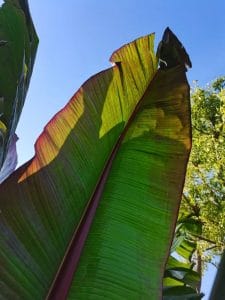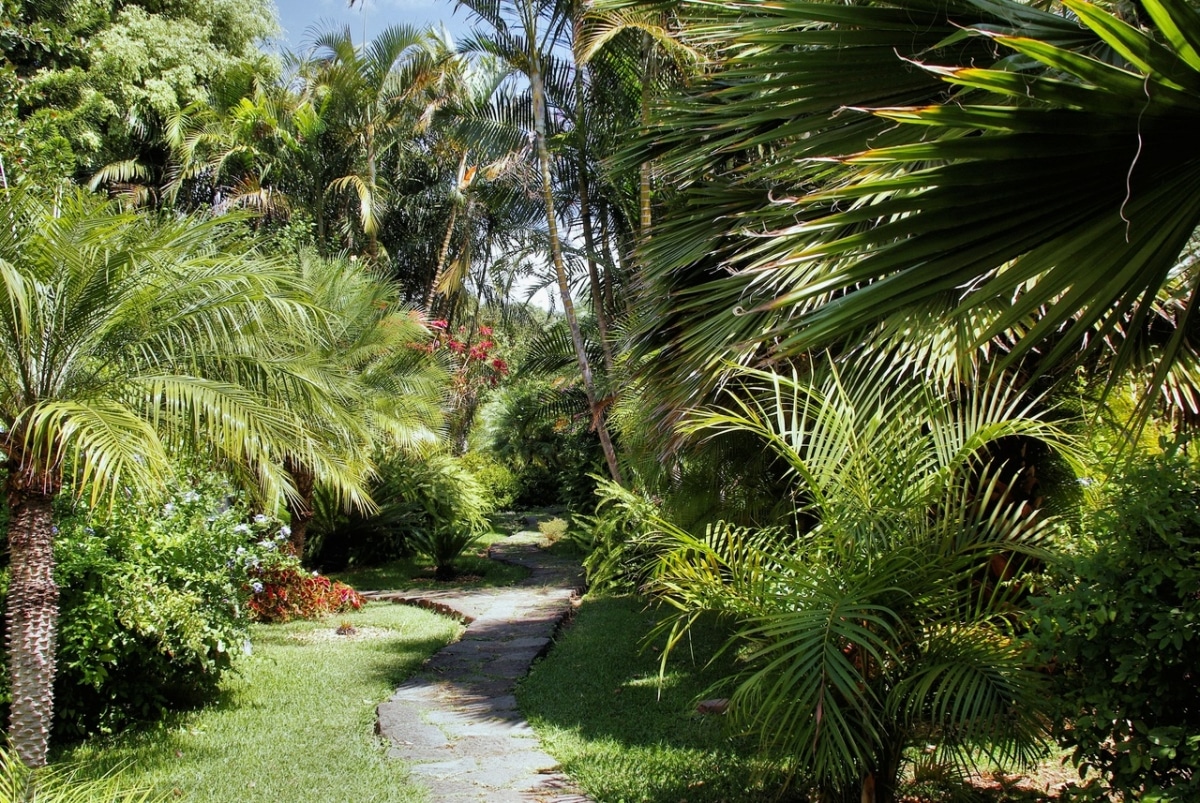
Large, broad-leaved plants are what make a garden look tropical., regardless of whether we have it inside a house or on a plot. And it is that in every jungle or jungle there are trees, palm trees and other plants whose foliage is large enough that we have to move it away, something that hardly occurs in a temperate forest.
When the weather is warm and the rains abundant, the leaves have the opportunity to reach impressive sizes. That is why the European flora is made up of species that, although beautiful, have rather small leaves. So If you dream of having a tropical garden or of decorating your house with large, broad-leaved plants, take a look at our selection.
giant bird of paradise (Strelitzia nicolai)
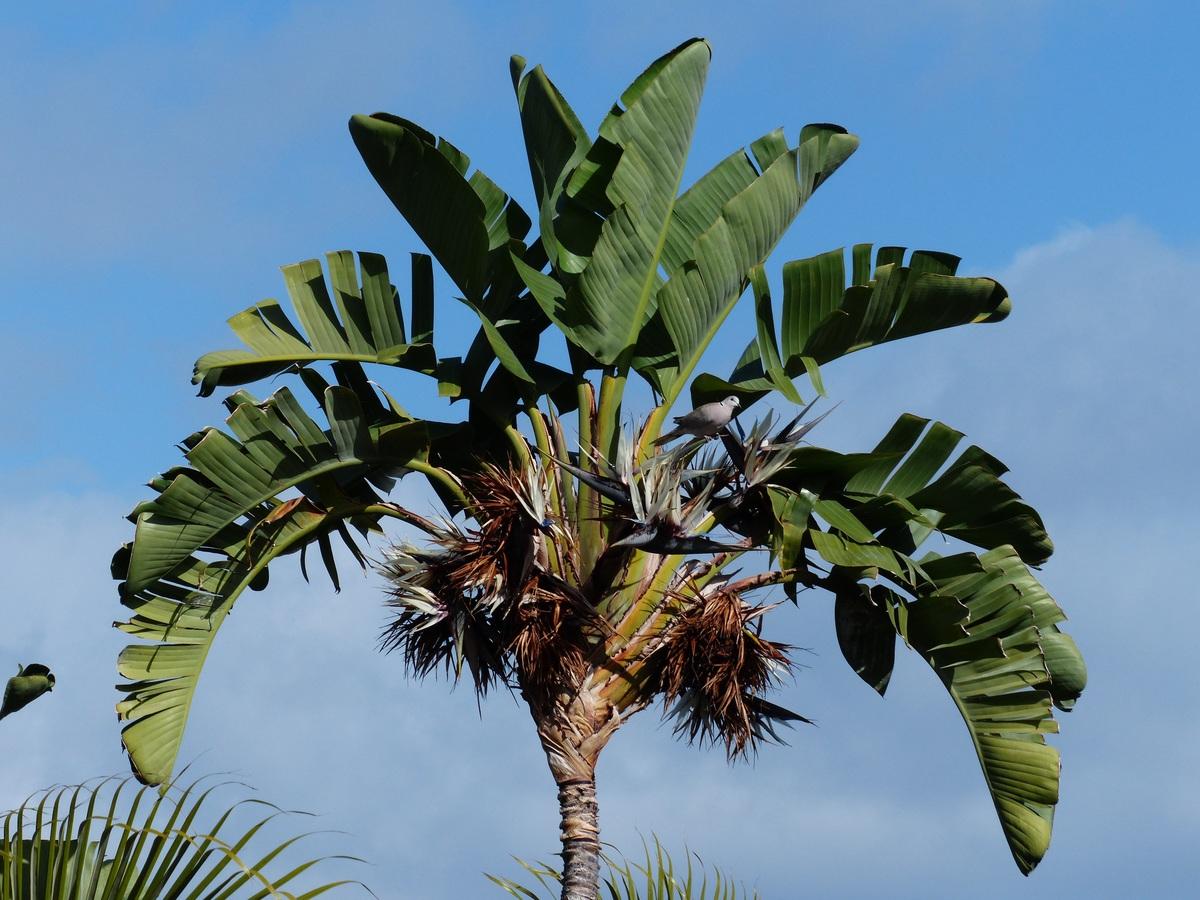
The plant known as giant bird of paradise is a rhizomatous herbaceous native to Africa. It is quite similar to bananas and ensetes, but differs from both in having leathery (and not soft) leaves that areThey open in two directions and measure up to 1 meter long by 30-35 centimeters wide.
It reaches a height of about 6 meters, and develops a false trunk about 20 centimeters thick. It resists the wind much better than the plants mentioned above, but it is recommended to plant in protected areas if it blows strongly. Resists up to -3ºC.
Japanese Banana (muse basjoo)
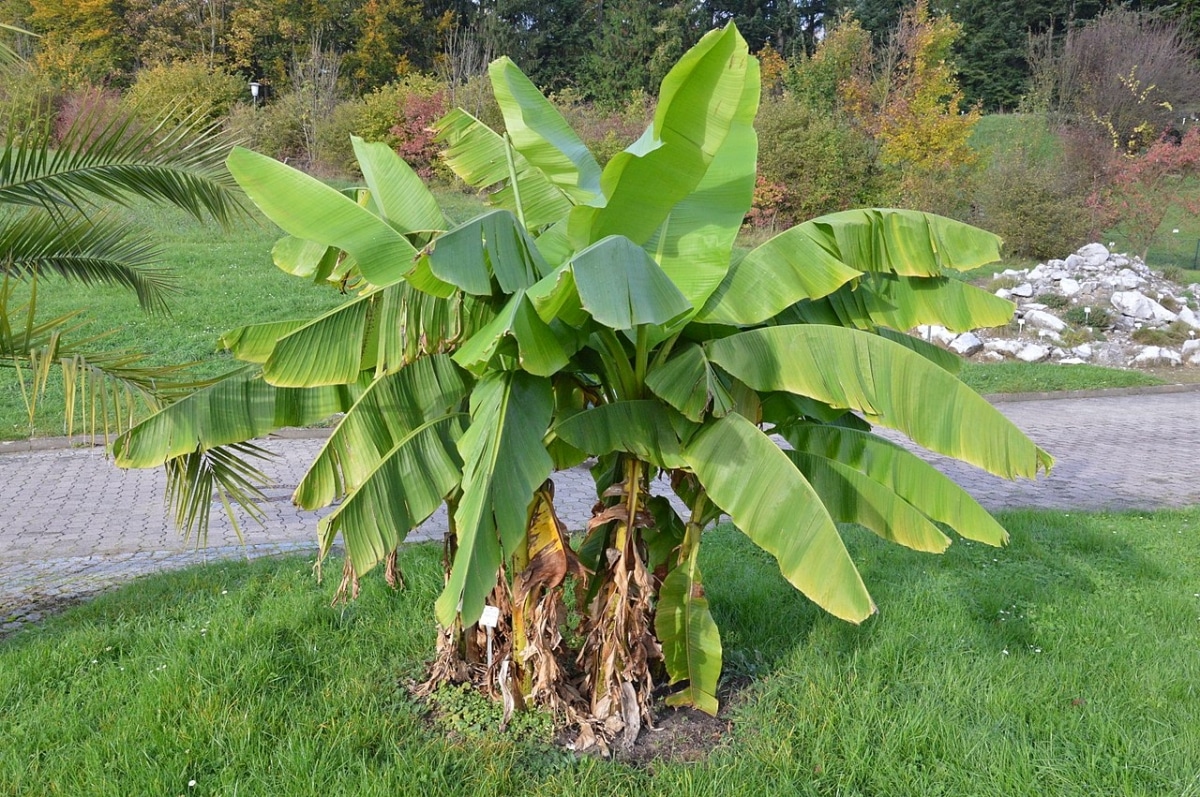
Image - Wikimedia / Illustratedjc
La japanese banana It is one of the most resistant muses to cold. It is native to southern China, and reaches a maximum height of 8 meters, with a stem or false trunk about 15 centimeters thick. Its leaves are green and very large, since they can measure 2 meters long by 70 centimeters wide, but they are also very fragile.: when the wind blows a lot they get damaged right away.
For this reason, it is recommended to cultivate in protected areas, in an area where the Sun shines directly, and in rich soils. It lives very well, without suffering damage, in climates without frost. Conversely, when temperatures drop below 0 degrees its ornamental value decreases quite a bit. It is said that the roots withstand up to -15ºC, but I am not so sure.
Mine gets very ugly when in winter we have a minimum of 0-5 degrees. Although the highs in that season are 10-15, even 20ºC, he has a hard time when night comes. For this reason, I recommend you to keep it inside the house if there are frosts.
Basque beret (Farfugium japonicum)
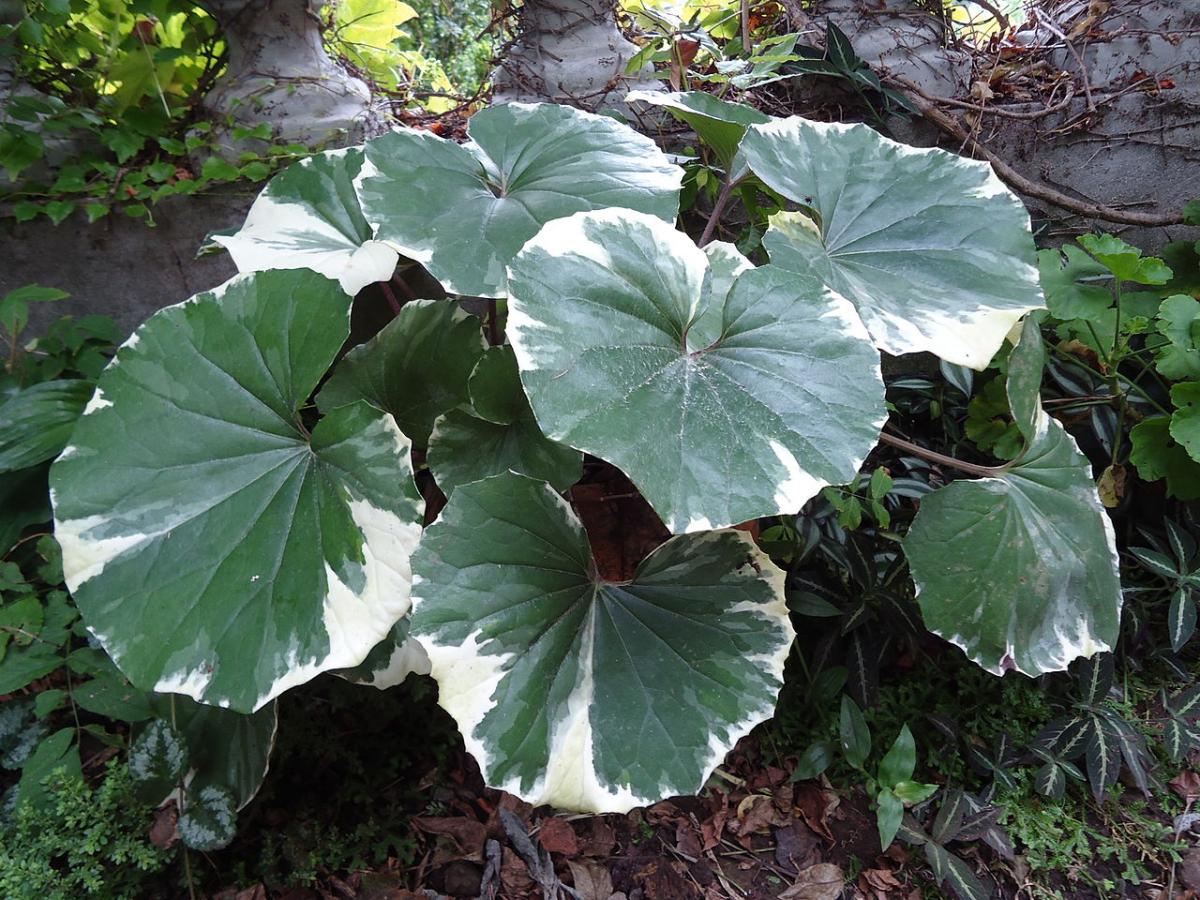
Image – Wikimedia/Darwinius/att
The plant known as basque beret It is a rhizomatous herbaceous native to Asia that reaches 60 centimeters in height. It has rounded, shiny dark green leaves, although there are variegated cultivars (with yellow or white spots) that are also gorgeous. Are they measure about 10 to 26 centimeters wide, and have long stems about 2 centimeters thick by 50-60 centimeters high. In autumn-winter it produces a flower stem with multiple yellow flowers.
It needs a lot of light when grown indoors, but outdoors it must be protected from direct sun, otherwise it will burn. It does not resist frost either..
Colocasia 'Black Magic'
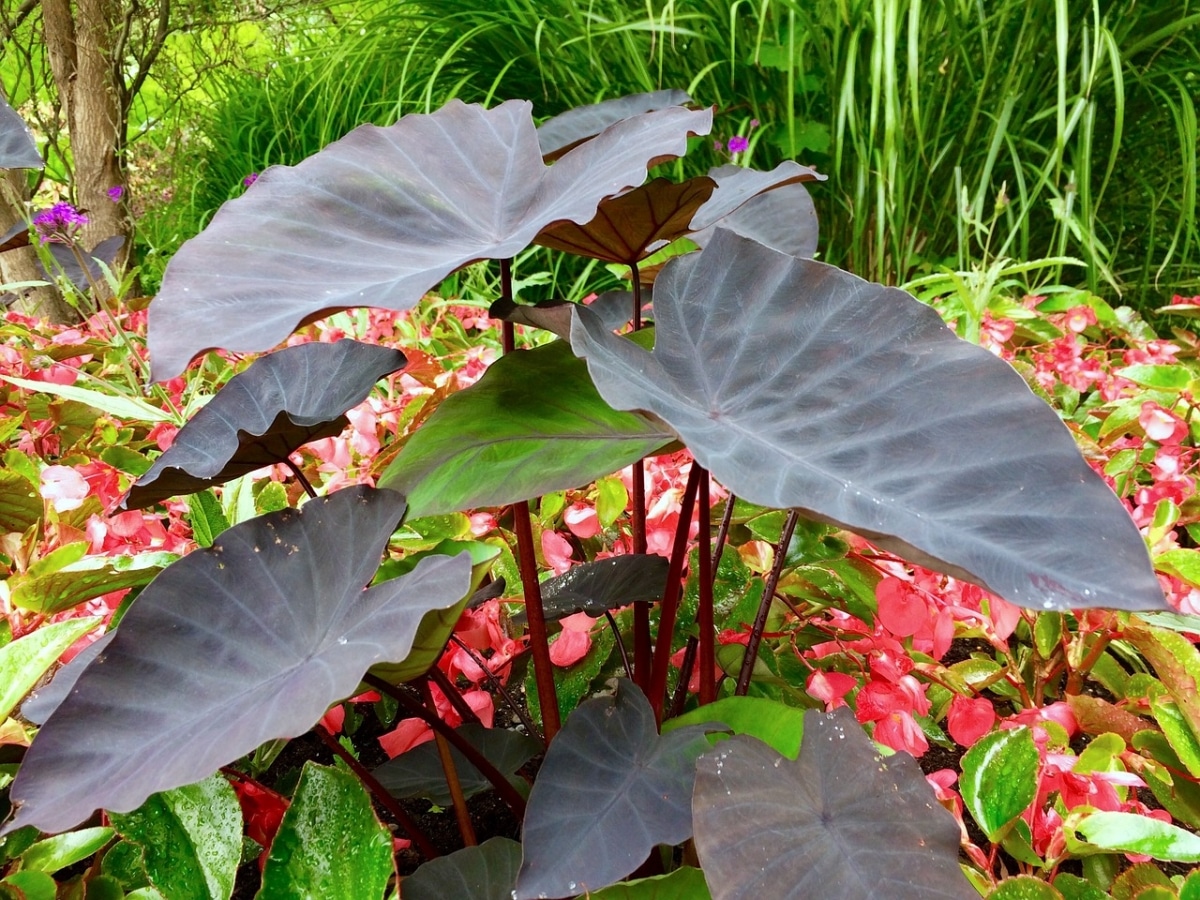
'Black Magic' as it is often called, is a rhizomatous plant native to Southeast Asia that could well be confused with Alocasia. Now, this is a grass that reaches a smaller height, about 60 centimeters, but nevertheless has very similar leaves. Are They can measure 50 centimeters long by 35 centimeters wide., and they are a beautiful lilac color.
It grows at a good rate, and can be kept both in pots and in the ground, in the shade or indoors with a lot of light. It resists frost well down to -10ºC, although it loses its leaves at 0 degrees.
Philodendron (Philodendron gloriosum)
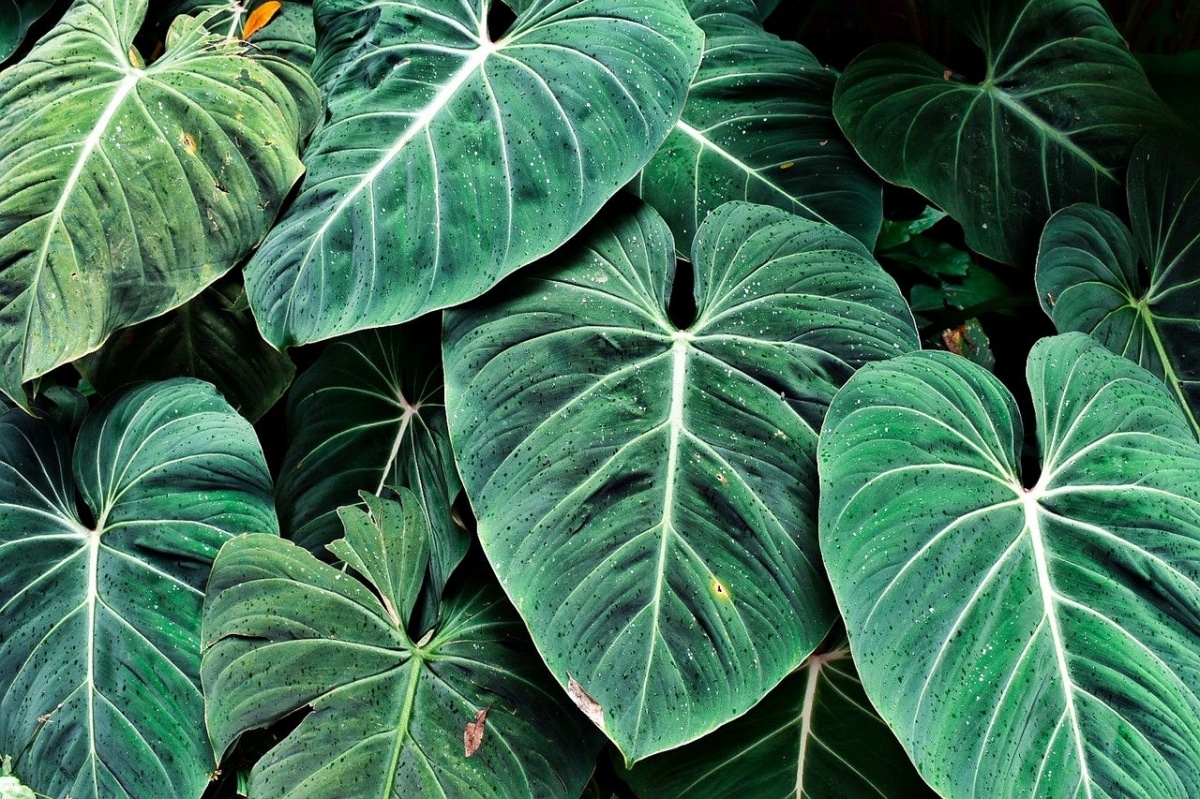
El Philodendron gloriosum It is a creeping tropical plant with heart-shaped perennial leaves that can measure up to 90 centimeters in length.. These are green and have whitish nerves. Therefore, it is a very decorative species.
However, in temperate climates it must be kept indoors, since does not resist frost. In fact, the lowest temperature it can withstand without being damaged is 15ºC.
Elephant ear (Alocasia macrorrhizos)
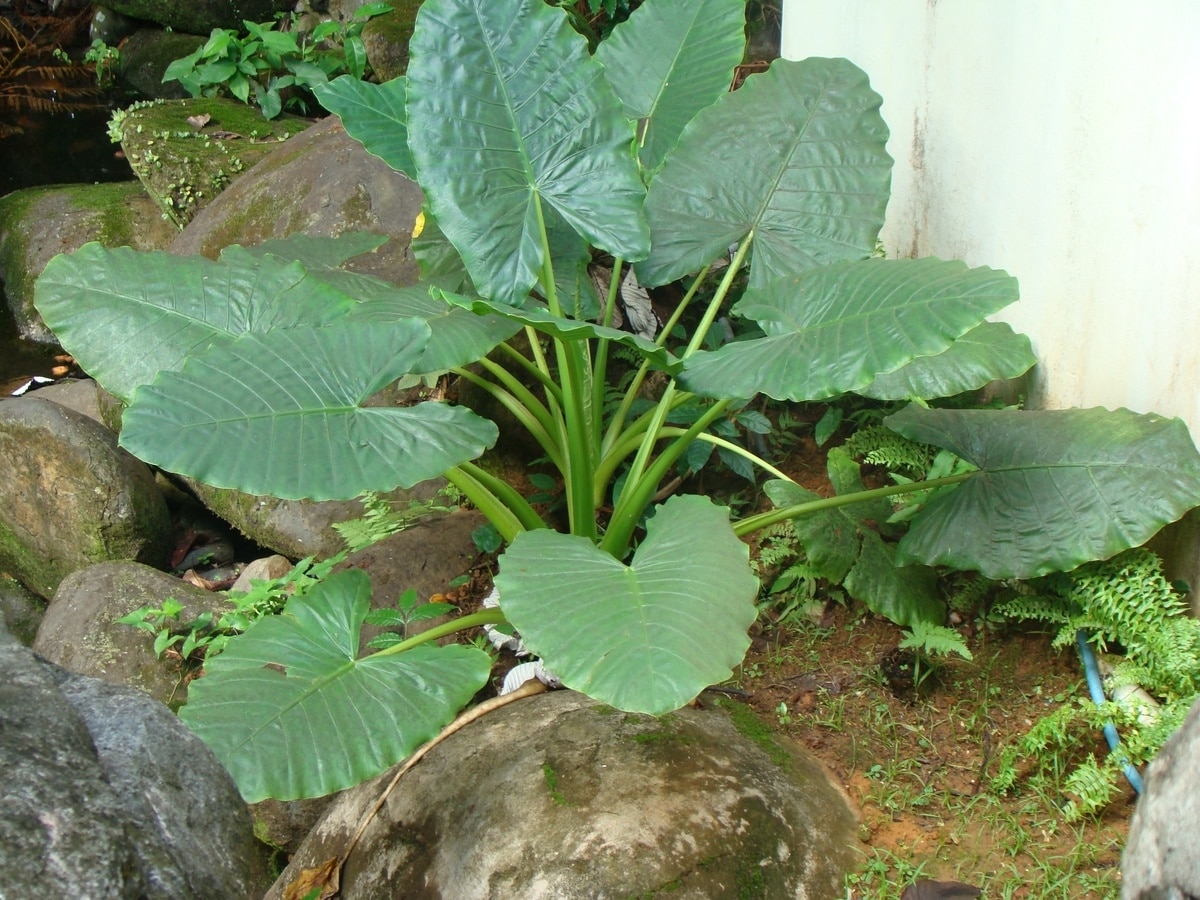
La elephant ear It is a plant native to the rain forests of Southeast Asia. It grows to a height of 1-1,5 meters, developing a stem about 10 centimeters thick. Its leaves are large, up to 1 meter long by 40 centimeters wide., somewhat leathery texture and green.
It is widely grown as an indoor plant, since on the one hand it adapts very well to living inside a house, and on the other does not resist frost.
Bismarck Palm (Bismarckia nobilis)
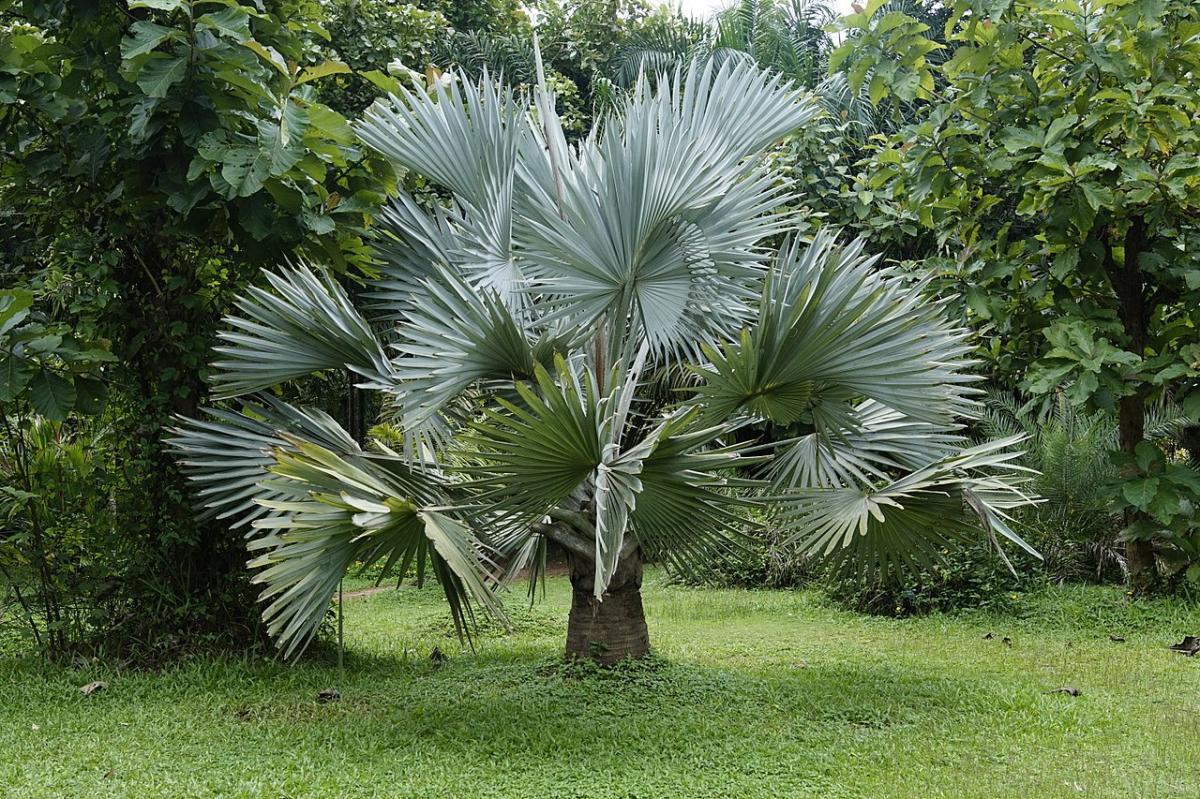
Image - Wikimedia / Vengolis
La bismarck palm It is a plant native to Madagascar. It reaches about 20 meters in height and develops a stem about 30-40 centimeters thick. It has almost rounded, silver-colored leaves, which can measure approximately 3 meters wide.. These have very long petioles, 2-3 meters long, which attach them to the stem.
Its growth rate is very slow; not surprisingly, it grows at a rate of about 20 centimeters per year, and does not resist much cold, only up to -2ºC. For this reason, it is not cultivated as much as other palm trees. But when the weather is warm, it doesn't hurt to reserve a spot for it in the garden.
red banana (Ensete ventricosum 'Maurelii')
- Copy of my collection
Here is another plant with large, broad leaves. The Ensete ventricosum 'Maurelii' is a plant native to tropical Africa that can reach 3-6 meters in height, which develops a stem or false trunk about 40 centimeters thick. Its leaves are huge, about 3 meters long by almost 1 meter wide. Also, you should know that it grows very fast if it is grown in warm climates and if it is watered frequently, at a rate of 1 meter per year.
Personally, it is one of the plants that I like the most. It requires almost no care (except for the ones we just mentioned). But it has two drawbacks: the first is that he doesn't like the cold. Mine gets ugly when the minimum drops below 10ºC, although it can withstand light frosts; and the second is that after it blooms -something that it does more or less at 4 years of age- it dies, and does not produce suckers, only seeds.
Pritchardia hillebrandii
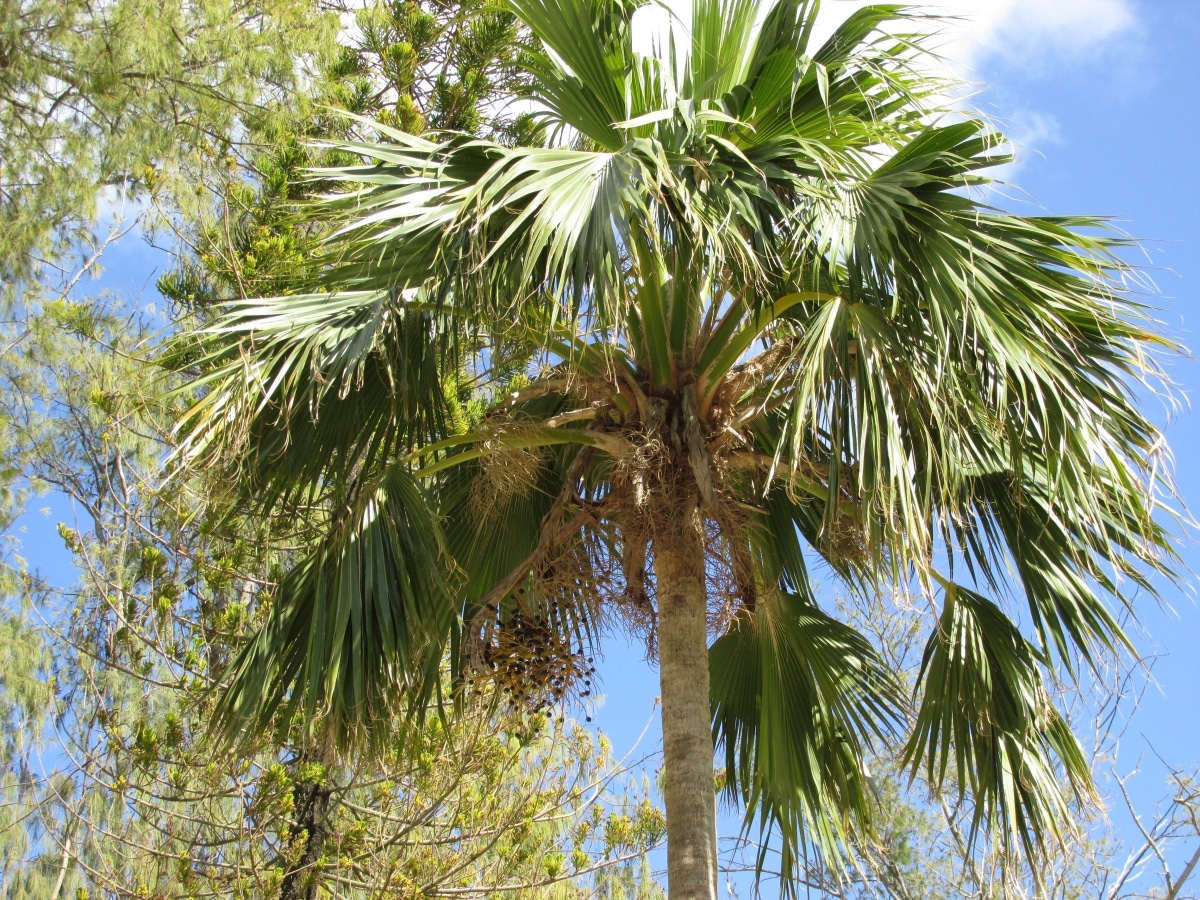
Image - Wikimedia / Forest & Kim Starr
La Pritchardia hillebrandii It is a palm tree that reaches a height of 8 meters, with a false trunk about 30 centimeters thick. Its leaves are rounded, grayish green, or bluish in the 'Blue Moon' variety. Are they can measure up to 1 meter, and are coriaceous. It has no spines.
Despite its tropical appearance, it is the Pritchardia species that most resists the cold. It's more, supports up to -3ºC, while the others only last up to -2ºC or even up to 0 degrees. For this reason, its cultivation is interesting near the Mediterranean Sea, as well as in protected areas; And it wouldn't look bad in a bright room either.
giant rhubarb (gunnera manicata)
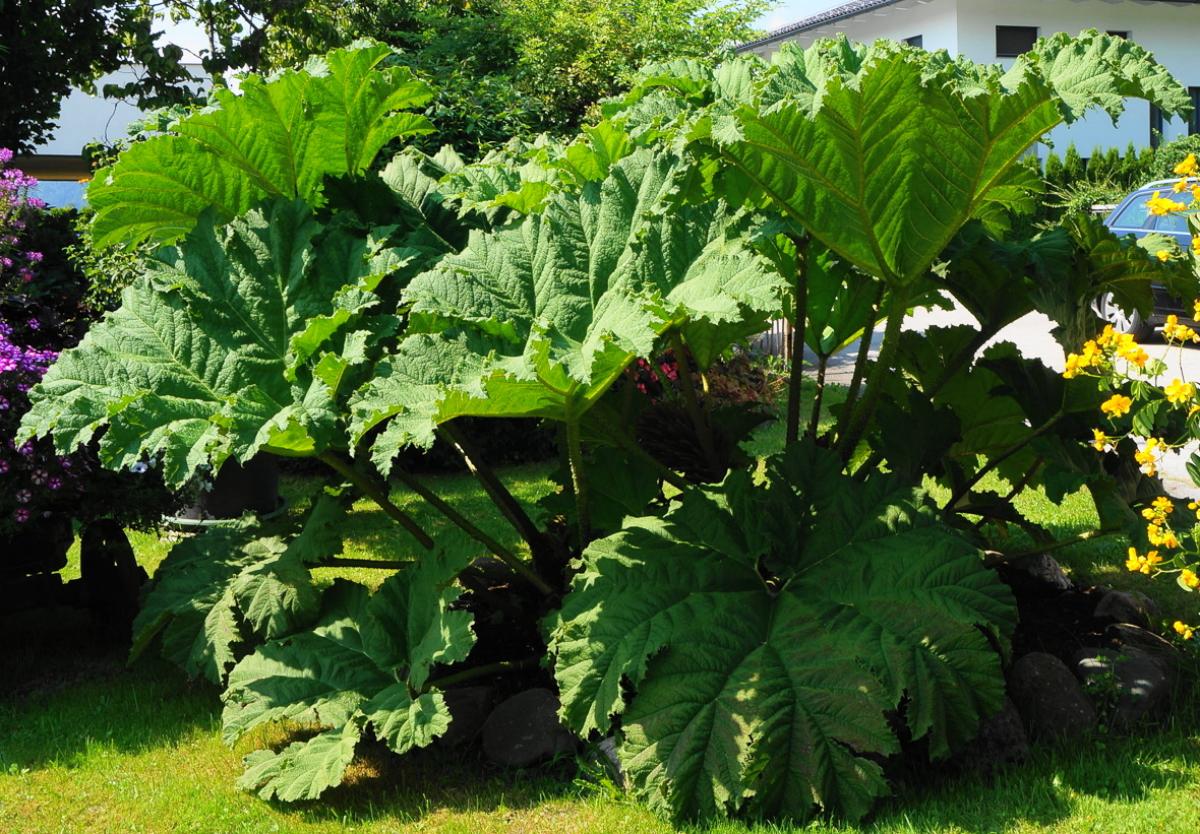
Image - Wikimedia / Naturpuur
The giant rhubarb or gunner is a thorny plant native to Brazil that, although it only grows up to 1 meter in height, develops green leaves so large that they can measure 120 centimeters in diameter. Of course, for this it is important that it is grown either on the edge of a pond, or in a pot that is watered frequently.
It is not difficult to care for, as it grows very well in sunny places and does not usually have pest or disease problems. What's more, resists up to -4ºC.
Do you know other plants with wide and large leaves?

